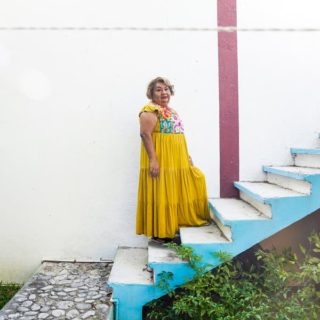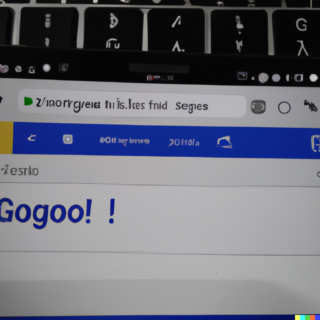MEXICO CITY — At 49 years old and under five feet tall, Martha Izquierdo doesn’t exactly fit the mold of a TikTok influencer. But having survived sexual abuse, kidnapping, two bouts with cancer and two heart attacks, conquering social media was practically a cinch for this Mexican journalist.
Ms. Izquierdo, who lives in a small town in southern Oaxaca state, has amassed more than 600,000 followers on the social media platform, with her videos accumulating some 24 million likes.
What’s the message that has made her so popular in a time of pandemic and in a country experiencing record levels of violence?
“I started talking about issues that had to do with seeing life in a positive way,” Ms. Izquierdo said. “Confronting your fears, making people understand that each one of us is unique, irreplaceable.”
In a recent video typical of her content, Ms. Izquierdo saunters up to the camera in a simple black T-shirt and floral pants. “Today’s outfit is confidence,” she says. “So you don’t stop believing in yourself.”
In another video, this one with more than 300,000 views, she rushes out of her house on her way to work.
“I’m running late, but always with the best attitude to confront the day to day,” she says. “How did you all wake up — did you give yourself your dose of love?”

An award-winning journalist with decades of reporting experience, Ms. Izquierdo is relatively new to social media stardom. As the pandemic began its assault on Mexico in 2020, she decided to open a TikTok account, where she goes by @marthaizquierdooficial.
“We were scared of going outside, scared of dying,” she said in a recent interview. “I think being vulnerable made a lot of people sit down and say, ‘Hey, we’re going to reflect on life and what we’ve been doing wrong.’ And that’s where I showed up.”
In May, Ms. Izquierdo posted a video of herself dressed up as Wonder Woman to celebrate being in remission from cancer. The video went viral, and soon Ms. Izquierdo began gaining legions of fans.
“I would dance, I would dress up, I would wear costumes,” she said. “I’m not a character — that person on TikTok is really me. And I’m actually even a little crazier.”
In a country where the pandemic has wrought a devastating toll on public health and the economy, Ms. Izquierdo offers her fans a dose of pure delight. And in a digital era where everything is photoshopped glamour, Ms. Izquierdo’s very ordinariness, whether exercising, driving to work or dancing to cumbia music in her back yard, has made her extraordinary.
Her colorful outfits are part of her appeal, from traditional Oaxacan dresses to bikinis for the beach — the long scar from cancer surgery that slices across her belly proudly on display. But Ms. Izquierdo’s brand isn’t so much couture as confidence.
“If you have to start over, start over,” she said in one clip. “That’s what life is all about — never giving up.”
Cristina Méndez Sánchez, who discovered Ms. Izquierdo’s videos several months ago, has suffered from depression and obesity since her partner died 15 years ago. She soon became a huge fan.
“I love her, I want to be like her,” said Ms. Méndez, 49. “That woman sure is gutsy!”

Being an icon of affirmation didn’t come naturally to Ms. Izquierdo, who had to go through some of the most painful moments of her life before she could tap into the exuberance that has made her a social media star.
Born in the Gulf of Mexico-bordering state of Veracruz to an accountant father and a homemaker mother, she knew from a young age she wanted to be a journalist.
“When they asked me: ‘What do you want to be when you grow up?’ I said, ‘A scientist, a singer or a journalist,’” Ms. Izquierdo recalled. “But since God didn’t give me the I.Q. of Einstein or the voice of Pavarotti, I was stuck with being a journalist.”
After her parents divorced, Ms. Izquierdo was sent to live with members of her extended family in Oaxaca, where she said a male relative raped her numerous times beginning when she was 9.
“I blocked it from my mind,” she said.
It was only years later, after she had met her partner, that she properly recalled what had happened, and through therapy, was able to confront the abuse — and even forgive her abuser.
“I can’t hold any resentment or negative emotion in my heart,” Ms. Izquierdo said. “Life is not meant to be lived with that.”
After graduating from high school, Ms. Izquierdo moved back to Veracruz to study journalism and eventually became a national correspondent for one of Mexico’s top newspapers, Reforma. She now works at a local radio station in Oaxaca, delivering news updates.

“She was a highly recognized journalist,” said Soledad Jarquín, a reporter who first met Ms. Izquierdo more than 20 years ago. “She had very good connections with people in power, but also everyday people.”
As for many reporters in Mexico, one of the world’s deadliest countries for journalists, reporting the news came with immense risks: Often, her work involved covering the cartel-fueled violence that has terrorized the country for decades.
In 2007, three newspaper sellers in a city near where she lived were killed, she recounted, by the violent Zetas cartel, whose assassins had mistaken their victims for journalists. When Ms. Izquierdo went to cover the killings, she received an ominous phone call saying she was next.
Ms. Izquierdo drove home, packed her suitcase and fled to Mexico City. But it didn’t take long until she was back in the field and back in danger.

In April 2013, while covering a conflict between local landowners, she was surrounded and detained by armed men. It was only when the army arrived that Ms. Izquierdo was released.
Still, despite continually confronting danger on the job, Ms. Izquierdo said her greatest challenge in life came when her partner of 18 years, who had been battling cancer and kidney problems, finally succumbed.
“I wanted to kill myself because I loved him so much that I stopped loving myself,” she said.
Then, in 2015, she was diagnosed with ovarian cancer and given eight months to live. Again, she thought about giving up.
But her friends and family convinced her to keep fighting. She underwent chemotherapy and multiple surgeries, leaving her body scarred.
“I would cry in front of the mirror when I looked at myself because my body looked mutilated,” Ms. Izquierdo said. “I felt like Frankenstein.”
Eventually she defeated the cancer — but in 2017 it returned, this time in her stomach. In February of that year she had a heart attack.
After surviving a second heart attack months later, Ms. Izquierdo said everything changed. While unconscious, Ms. Izquierdo said she had a vision during which she heard her deceased partner’s voice telling her to go on living.
“If I came back to life it was for one purpose,” she said. “To keep living, to be happy, and to help other people with my life experience.”

It was that positive attitude that catapulted her to TikTok fame. But along with all the followers came the trolls, who called her overweight or unattractive. At first, the negative comments started getting to her; then, she decided to stop caring.
“When I was allowing myself to be affected by unfounded negative comments, I said to myself, ‘No — I love myself.’”
Before long, the number of negative comments started dropping, even as her followers increased. Watching haters change their attitude toward her, Ms. Izquierdo said, is what she considers one of the greatest achievements of her TikTok presence. That, and the messages she receives from fans telling her the effect she’s had on their lives.
A few weeks ago, one of those fans, Ms. Méndez, summoned the courage to contact her idol. The resulting phone conversation, she said, has turned her life around: She’s gone to see a specialist about losing weight and plans to start working out.
“I want to wake up dancing every morning like she does,” Ms. Méndez said. “She’s a woman worth her weight in gold.”
For Ms. Izquierdo, this kind of impact is the point of all her efforts.
“It’s all worth it if I can change someone who is facing a problem,” she said. “If I can make them smile.”

FEATURED IMAGE: The videos of Martha Izquierdo, a journalist and cancer survivor, have earned tens of millions of TikTok likes.Credit…Marian Carrasquero for The New York Times
By Oscar Lopez/The New York Times





